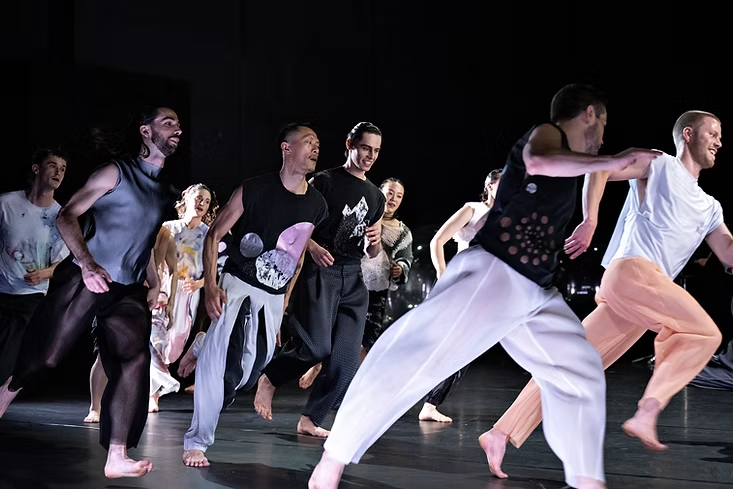
In Focus: Dance Theatre Heidelberg Dancing In-between the Contact Zone
As the audience settles into their seats, a quiet anticipation fills the venue. The dancers begin their routine onstage, gracefully moving against a shimmering silver backdrop. Slowly, the rows of bars that were previously dividing the stage rise up and disappear, allowing the dancers to blend their movements seamlessly into one fluid space. They move in near silence—all you hear is the rustling of their costumes and their breath after a strenuous move. Each dancer is fully immersed in their own unique movements, yet they stay connected to each other through a shared rhythm. Even as they express themselves individually, a sense of harmony unites them. Some dancers carry musical instruments, using them as extensions of their own flows rather than playing them.

On the right corner of the stage, an open photo umbrella lies unfolded, resembling a satellite dish in the vastness of space. Transparent, inflatable orbs on the back left of the stage catch and reflect the dynamic spotlights, like stars in the sky. The dancers move slowly towards the center as if drawn together by a gravitational force while the spotlight circles them, turning their bodies into matter in space. Against the deeming spotlights, the silver background sparkles like a night sky full of twinkling stars. Two dancers in the background hold violins, and a row of orchestra members provides the musical backbone for the performance. Occasionally, the orchestra becomes part of the act, joining in with expressive gestures as the grand piano descends from the ceiling.
The performance flows with moments of individual bursts of energy and collective harmony. Dancers swing their arms through the air, evoking the motion of planets in orbit. As they continue, their movements balance between stillness and momentum. Dancers collide momentarily, their paths intersecting, yet they navigate these encounters with finesse, maintaining their individual rotations. It becomes a dance of controlled spontaneity, where brief collisions and moments of connection alternate in a harmonious rhythm.
The dancers’ sweeping arm movements seem to defy gravity, creating a feeling of weightlessness, as if they’re floating in space. In this state, each dancer becomes like a celestial body—unique yet vulnerable, reaching out for connection and a sense of grounding. The vast space around them highlights both the wonder and the loneliness of drifting through the universe, reflecting the dancers’ dreams and fears of existing in such an endless, unknown realm.
As the piece progresses, the orchestra members leave the stage, and the dancers, moving in groups, begin to exit one by one. From the left corner, the horn section quietly enters and forms a row at the back corner. As they start Beethoven’s dramatic 5th Symphony in C Minor, the stage abruptly floods with orange light, building anticipation for a more powerful scene. These bursts of energy create a gripping tension, filling the space with an awe-inspiring atmosphere. The lead dancer reenters for a solo, yet this time with a faster, more intense choreography. The solo is accompanied by increasing numbers of dancers on stage as they continue to express their unique movements, filled with abrupt and rapid motions, creating a cycle of exits and entrances. The charged movements evoke a sensation of collision—whether between atoms, conflicts, or emotions.
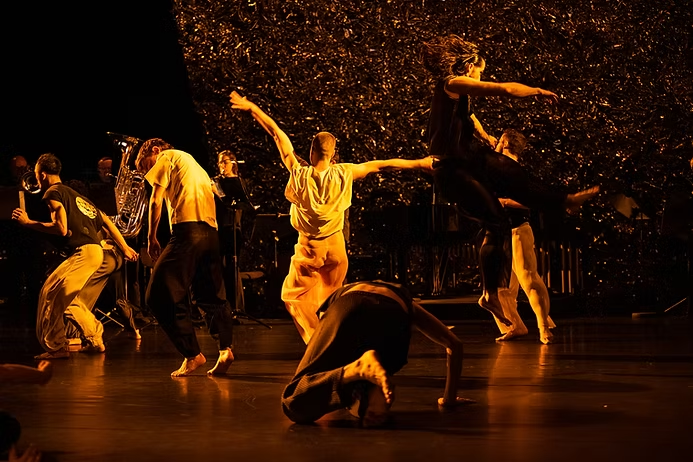
The relationship between the dancers’ bodies and the space is unmistakable. In human imagination, the sky and space often represent the origin of beauty while also being vast and overwhelming. The dancers convey both the fear of collision and the intensity of uncontrolled energy. While they share this sense of fate, each dancer reacts in their own way, showing how everyone reacts differently to their collective fate.
Dance – Choreography
In creating such an ensemble, a variety of perspectives converge, sparking fascinating, at times, diverse debates on the meanings behind dance and choreography. Interval has sat down with some of the Dance Theatre Heidelberg (DTH) members for an interview to inquire about the stories behind the performance of “Reality and the Cosmos.” Among the company, Thamiris Carvalho and Inés Belda Nácher offer two differing views on their roles as dancers. Thamiris identifies more as a performer, rejecting the conventional label of a ‘dancer,’ which implies anonymity and a lack of space for personal expression. In contrast, Inés embraces the term dancer, influenced by her family’s engagement in the field.
Julián Lazzaro, another member of the DTH, sees dance as a journey of self-exploration, both physically and mentally. While often a solitary process, it also serves as a way to express deep, subconscious experiences and emotions without words — as elements within the performance evoke emotions and memories in both the dancers and the audience. It is this moment of shared experience that helps create a bond between the people performing and those watching. “Reality and the Cosmos is not a work of art that has been created to be; it is not about concrete and permanent materiality, but it is constantly moving and changing through our bodies’ motions,” explains Julián. He emphasises the dynamic nature of their work, likening it to a bowl of ramen: the ingredients remain constant, but the deepening of the broth flavor represents the continuous changes through the dancers’ motions. The blend, the umami taste, emerges from a long boil — through the daily practice, self-reflection, and the cumulative experiences of each performance— it is always rewarding yet ever-changing.
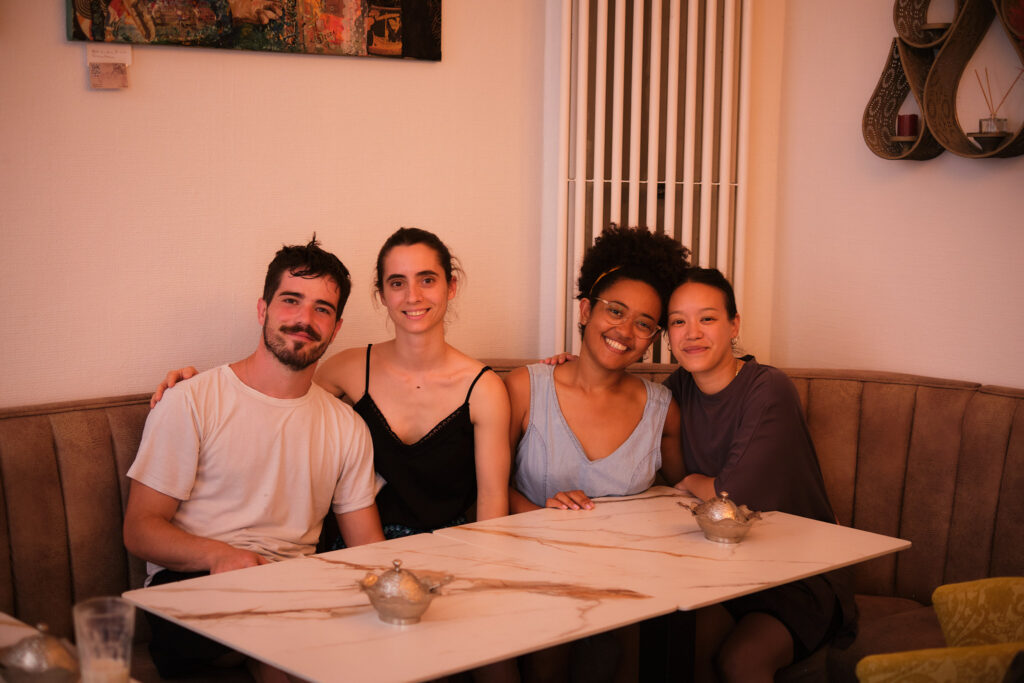
The choreographer Iván Pérez fosters a collaborative environment, encouraging dancers to co-produce sequences and movements. Dancers have the capacity to express their individuality on stage, with Iván emphasising the importance of listening to individual needs. This approach allows performers to be themselves, even displaying fatigue openly on stage, creating a genuine connection with the audience. “If you’re tired,” Yi-Wei Lo explains, “don’t hide. Just pant or stretch out your body. It is also a way to involve the audience in feeling how we actually feel.” Each dancer introduces variations based on their interpretations, incorporating delays, ascents, and unique arm movements influenced by their understanding of the sequence and emotional state on the show day.
It is the moments like those, where the dancers standing on the edge of the stage are staring into the crowd for a prolonged time, or even when the satellite dish transforms into a glaring star-like entity and shines a light on the viewers — that invite us into the scope of this performance: the viewers are invited actively to be emotionally engaged.
As the show nears the end, the bars that were lifted at the beginning of the show slowly descend. This time, the bars moving resemble a three-dimensional movement of continuous waves.
“Human beings have always looked up at the sky, seeking something. The central goal has perhaps remained the same ever since: to contextualise human existence within the temporal and spatial expanses of the universe.”
— excerpt from the Reality and the Cosmos brochure
Space and Sublime
Gazing up at its captivating beauty, with stars adorning the sky, the space evokes contemplation about the mysteries beyond. At the same time, this sense of awe is accompanied by a recognition of the overwhelming vastness—something beyond the grasp of understanding. The universe becomes a space of paradox, a canvas of wonder, and a repository of the unknowable.
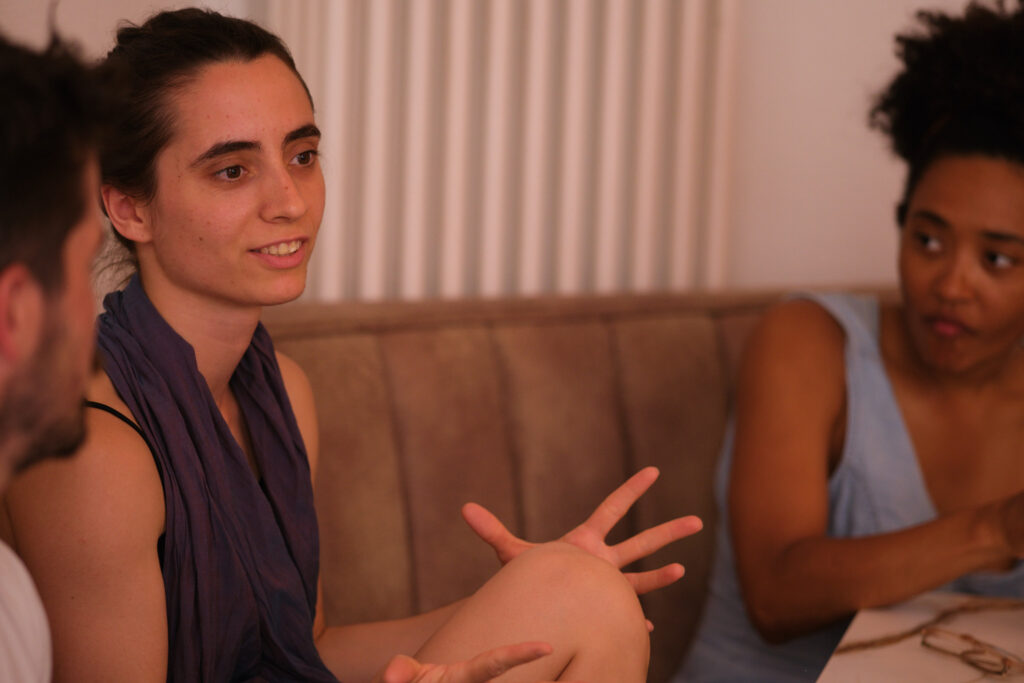
While watching Reality and the Cosmos, I found myself connecting the dancers in space with the concept of the sublime, as there have been previous investigations of human emotions in nature in the works of art.
Anglo-Irish philosopher Edmund Burke, for example, explored the sublime as an aesthetic concept contrasting with beauty, rooted in sensibility (our capacity to feel something deeply.) While beauty brings the viewer pleasure, the sublime evokes profound emotional responses, often tied to fear and suspense— the fear that nothing new will happen or that we are stuck in a predictable future. According to Burke, the sublime stirs a stronger passion beyond mere satisfaction, connected to pain, endings, and mortality. This entirely spiritual passion, he claims, is linked to privation, or lack of something: privation of light, terror of darkness; privation of others, terror of solitude; privation of language, terror of silence; privation of objects, terror of emptiness; privation of life, terror of death. It is when we anticipate an ending that fear becomes terrifying, and when we feel truly alone, that fear becomes paralyzing.
It is indeed because, over time, the understanding of nature in relation to humans has changed. Amidst the global climate crisis, one can sense a change in how artists depict nature in their artworks. Through global warming, we are now more aware of how much we humans have impacted nature and the Earth’s lifespan. The idea that the Earth is densely populated and there is no spot on Earth left that is not touched by a human also shapes how we think about our place on this planet. The inability to grasp the complexity of technology, scientific discoveries, and environmental challenges further contributes to an increasingly ambiguous relationship between humans and nature.
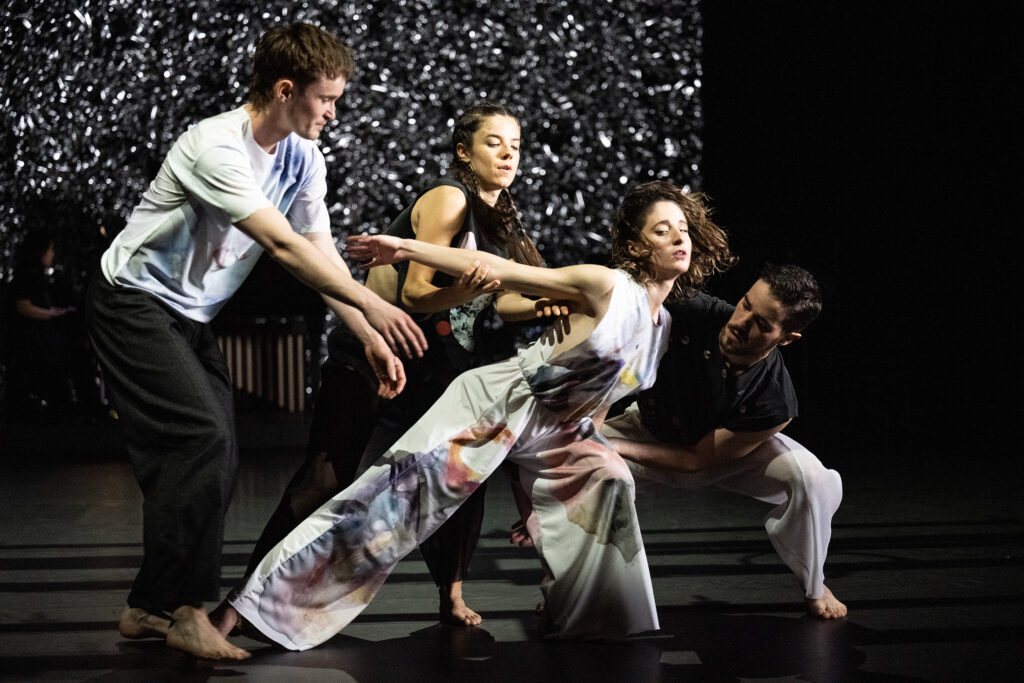
Simultaneously, our scientific knowledge is influenced by cultural and societal views. For example, science fiction films like Star Wars reflect imperialist ideas about territory. Our understanding of space, which most of us have never experienced firsthand, is conditioned through the depictions by media and art. The discussions on outer space revolve around terms such as “colonizing Mars,”—reflecting the prevailing extractivist logic (taking natural resources for economic profit without considering societal or ethical criticality) on the territory.
The philosopher Immanuel Kant, who has written about sensing sublime or beauty through aesthetic judgment, has once said that “We exercise a precious form of intersubjectivity, establishing ourselves as a community of feeling subjects linked by a quick sense of our shared capacities.” In other words, we connect as a community of individuals sharing similar feelings and experiences. According to Kant, this shared emotional experience helps to train and develop our sense of community as we collectively perceive and appreciate art.
Returning to the realms of Reality and the Cosmos, I contemplated the intersection of art, performance, and the portrayal of space. What cultural narratives emerge when we examine how space is depicted through these mediums? What do these artistic expressions reveal about our collective imagination, and with whom do we share these visions of the cosmos?
Quick Explainer In Focus
As its name elucidates, In Focus is a place where we discover topics within the neighbourhood of Heidelberg that delves into the realm of transculturality (but to be fair, everything is transcultural!) We explore how transculturality manifests in our surroundings through interviews on interdisciplinary topics with people in Heidelberg, and will eventually reach out to other regions in the future.